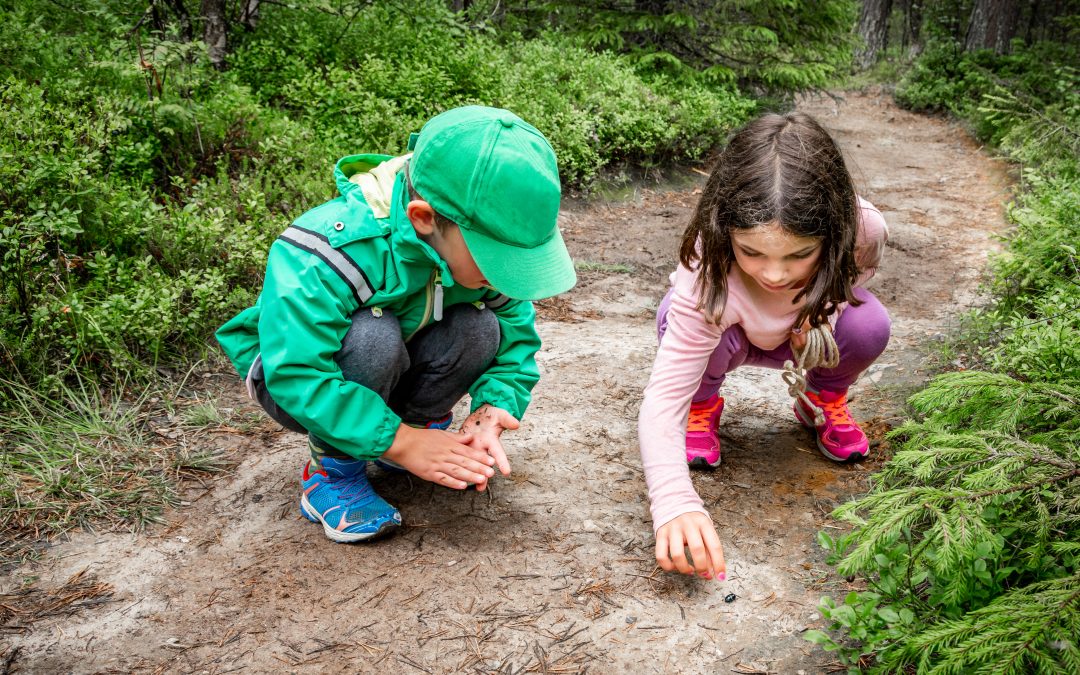The move to virtual learning means students are spending more time in front of computer screens. Why not break up screen time with a little family green time? While visiting some of our favorite outdoor spaces and places may not be possible right now, there’s plenty of nature to be had right outside our homes. Here, we share five ways for students and their families to connect with the great outdoors without having to leave the backyard.
Turn Your Backyard into a Classroom
Take a break from the keyboard and get your hands dirty! From art projects and math in the outdoors to learning more about the trees and plants just outside your door, these resources from Green Schoolyards America and Project Learning Tree flip the “at-home” classroom inside out and will help students and their families become better acquainted with nearby nature. More ideas from both organizations can be found here and here.
Explore Art in Your Backyard or Neighborhood
Part one of a blog series from Green Schoolyards America, Explore Art in Your Backyard or Neighborhood highlights six art-related activities that make use of natural materials. Activities include making your own watercolors and creating mosaic pictures.
Explore Math Outdoors, Close to Home
Part two of a blog series from Green Schoolyards America, Explore Math Outdoors, Close to Home highlights eight activities that use natural materials to teach math concepts such as symmetry, arrays, and ratios.
Name that Tree
This Project Learning Tree activity leverages two free mobile apps that families can download and use to identify trees around the yard and in the neighborhood. Afterward, students are encouraged to research various characteristics of the trees they identified.
Sounds Around
In this Project Learning Tree activity, students and their families explore nearby nature by tuning into the sounds around them. They then talk about what they heard and who/what created the sound.
Bursting Buds
In this Project Learning Tree activity, students and their families search for tree buds on a walk around their yard or neighborhood. They then investigate what’s inside each bud, where leaves come from, and how they form.
Hold a Backyard Nature Scavenger Hunt
Explore the many types of nearby nature in your backyard by organizing a scavenger hunt. Create a list of clues based on the trees, plants, and animals that live in and around your backyard. Give everyone a list and a bag for collecting and get started! If you are able, you can extend the hunt to nature found around your neighborhood. Check out this website for a sample list and game plan that includes reflection questions and add-on projects, such as creating a family nature box or recording your finds in a nature notebook.
Start a Nature Journal
Speaking of nature notebooks, now is the perfect time to start a nature journal. Nature journaling is a great way to encourage students to tune into the natural world and record their observations, whether through words, drawings, or found objects. Families can share their daily entries and discuss what they saw or found. Journals can also be used to track seasonal changes and patterns that can be reported to citizen science websites (more on that below). This Project Learning Tree webpage provides additional tips, ideas, and resources for nature journaling.
Learn About Birds
Bird watching is a fun way for students and their families to learn more about the feathered friends who live close by. A great place to start is the Cornell Lab of Ornithology’s eBird website. Download the Merlin Bird ID app to identify bird species and the eBird Mobile app to track the birds you spot. Live in the city? Celebrate Urban Birds is your best bet for learning about urban birds and sharing your observations through their online dashboard. The website also includes ideas for bird-related art and gardening activities. For educational lessons and activities, check out the Audubon for Kids website for weekly themed resources that encourage students to become more connected with nature through learning about birds. Read this article for even more bird watching tips, ideas, and resources.
Become a Citizen Scientist
Take part in a citizen science project and contribute valuable data to science! To get started, visit SciStarter’s education page where you will find a selection of age-appropriate citizen science projects. Pick a project from this page or search SciStarter’s database to find one that interests your family. Another option is to hold a backyard bioblitz. A bioblitz involves counting all the plants, animals, fungi, and other living things that make their home in a certain area. This National Geographic website provides step-by-step instructions, as well as tools and resources, for organizing and carrying out your own backyard bioblitz.
Staying connected with the outside world is more important than ever right now, not just for our physical health but our emotional and mental health as well. We hope these activities will inspire students and their families to make outdoor time part of their “stay at home” routine, and that this routine will stick for weeks, months, and years to come.
For yet even more ideas, check out this recent article on Family Nature Clubs from the Children & Nature Network.
The GSNN Team

